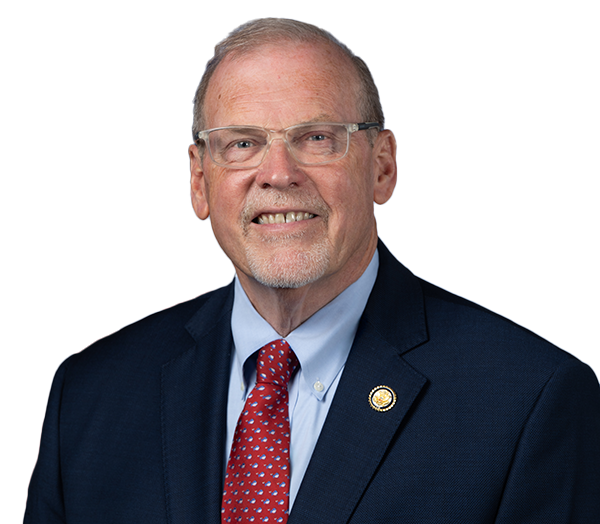Death By A Thousand Rules: EPA’s Drive To Kill Coal
Human Events,
March 30, 2011
Tags:
Energy and Environment
Coal is a vital domestic natural resource that powers the U.S. economy.
Coal is a vital domestic natural resource that powers the U.S. economy. More than 50% of the U.S. electric supply comes from coal-fired power plants. This obviously translates into a lot of jobs: In 2009 there were 1,400 mines in the U.S. employing over 87,000 miners. There were also 31,000 jobs related to the transportation of coal and 60,000 jobs in coal-fired power plants. Notably, these approximately 178,000 jobs do not include the indirect employment supported by industry, estimated to be almost two million jobs. These jobs pay their workers well, as 2008 figures from the U.S. Bureau of Labor Statistics show: Nonsupervisory coal miners earn an average of $1,140 per week or a little more than $23 per hour on average. This compares well to just above $18 per hour elsewhere in private industry. But I don’t think the folks at the Environmental Protection Agency care very much about all that. I believe that, through numerous rules and regulations, EPA is trying to kill this industry; mostly, it seems, to appease far-left environmentalists. But what will that mean for the rest of us? As more coal-fired power plants are retired, electricity prices will naturally rise. Don’t just take my word for it. As then candidate Obama famously said, “Under my plan of a cap and trade system, electricity rates would necessarily skyrocket.” He also said “So if somebody wants to build a coal-powered plant, they can. It’s just that it will bankrupt them because they’re going to be charged a huge sum for all that greenhouse gas that’s being emitted.” Although the President’s cap-and-trade system failed in Congress, his EPA is pursuing, through regulations, a similar plan that will make energy prices skyrocket. More specifically, there are several multi-billion-dollar EPA regulations in various stages of the rulemaking process which, if implemented, will be extremely harmful to the coal industry. Each one alone would hurt the industry, but the cumulative impact would be devastating. I’m going to note only two major rules, but there are several others that will only add to the pain. But that’s not all. Another extremely harmful rule is the proposed regulation of Coal Combustion Residuals (CCRs) under the Resource Conservation and Recovery Act. EPA is considering regulating CCRs, or coal ash, as a “special” listed waste under RCRA’s subtitle C program, despite having concluded in 1993 and 2000 that CCRs do not warrant such regulation. In 2000, EPA stated, “The agency has concluded that these wastes do not warrant regulation under subtitle C of RCRA.” A decision to treat coal waste as a special listed waste would also impose enormous costs, potentially exceeding $55 billion, on consumers and ratepayers. In addition to hurting the power sector, this regulation would kill the $2 billion-a-year CCR recycling trade. This is why I voted for an amendment barring funds for EPA to regulate fossil fuel combustion waste. To add more insult to injury, the Regulatory Impact Analysis conducted last year as part of this proposed regulation stated, “The RIA for this proposed rule does not include either qualitative or quantitative estimation of the potential effects of the proposed rule on economic productivity, economic growth, employment, job creation or international economic competitiveness.” It is quite troubling, though not surprising, that EPA didn’t take the potential harmful effects on the economy or jobs into account. These rules will have a significant impact on generation capacity. Credit Suisse estimates coal plant retirements exceeding 50,000 MW in response to EPA’s regulatory agenda in the coming years. FBR Capital Markets concluded that EPA regulations could cost consumers more than $80 billion and force the retirement of up to 70,000 MW of coal-fired power plants. The Brattle Group estimated up to $180 billion in compliance costs and 50,000 MW of coal-fired power plant retirements. This massive loss in capacity will put unsustainable pressure on domestic natural resources. With the current turmoil in the Middle East, it seems more irresponsible than ever to enact regulations that will lock away our most abundant natural resource. Where are we going to make up this capacity? I don’t think new solar panels on the White House roof will put much of a dent in the country’s energy needs. There are hundreds of thousands of households that depend on coal for their livelihoods and tens of millions more who depend on it to provide affordable, reliable energy. From the miners who dig it out of the ground, to the freight rail operators who transport it around the country, to the power plant operators who burn it so that people can have reliable, affordable electricity, this industry cannot be put out of business simply because the extreme left is calling for an end to coal. My sincere hope is that EPA will hit the reset button on these regulations and take the time to consider the economic, reliability and jobs consequences of these regulations. The cost is one we simply cannot afford. Morgan Griffith, a Republican, represents Virginia's 9th Congressional District.Click HERE to read more. |
Stay Connected
Use the form below to sign up for my newsletter and get the latest news and updates directly to your inbox.

